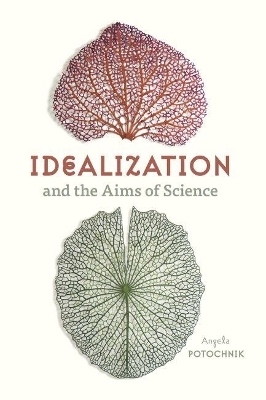
Idealization and the Aims of Science
University of Chicago Press (Verlag)
978-0-226-75944-9 (ISBN)
Idealization and the Aims of Science shows just how crucial idealization is to science and why it matters. Beginning with the acknowledgment of our status as limited human agents trying to make sense of an exceedingly complex world, Angela Potochnik moves on to explain how science aims to depict and make use of causal patterns—a project that makes essential use of idealization. She offers case studies from a number of branches of science to demonstrate the ubiquity of idealization, shows how causal patterns are used to develop scientific explanations, and describes how the necessarily imperfect connection between science and truth leads to researchers’ values influencing their findings. The resulting book is a tour de force, a synthesis of the study of idealization that also offers countless new insights and avenues for future exploration.
Angela Potochnik is professor in the Department of Philosophy and director of the Center for Public Engagement with Science at the University of Cincinnati.
Preface
1 Introduction: Doing Science in a Complex World
1.1 Science by Humans
1.2 Science in a Complex World
1.3 The Payoff: Idealizations and Many Aims
2 Complex Causality and Simplified Representation
2.1 Causal Patterns in the Face of Complexity
2.1.1 Causal Patterns
2.1.2 Causal Complexity
2.2 Simplification by Idealization
2.2.1 Reasons to Idealize
2.2.2 Idealizations’ Representational Role
2.2.3 Rampant and Unchecked Idealization
3 The Diversity of Scientific Projects
3.1 Broad Patterns: Modeling Cooperation
3.2 A Specific Phenomenon: Variation in Human Aggression
3.3 Predictions and Idealizations in the Physical Sciences
3.4 Surveying the Diversity
4 Science Isn’t after the Truth
4.1 The Aims of Science
4.1.1 Understanding as Science’s Epistemic Aim
4.1.2 Separate Pursuit of Science’s Aims
4.2 Understanding, Truth, and Knowledge
4.2.1 The Nature of Scientific Understanding
4.2.2 The Role of Truth and Scientific Knowledge
5 Causal Pattern Explanations
5.1 Explanation, Communication, and Understanding
5.2 An Account of Scientific Explanation
5.2.1 The Scope of Causal Patterns
5.2.2 The Crucial Role of the Audience
5.2.3 Adequate Explanations
6 Levels and Fields of Science
6.1 Levels in Philosophy and Science
6.2 Going without Levels
6.2.1 Against Hierarchy
6.2.2 Prizing Apart Forms of Stratification
6.3 The Fields of Science and How They Relate
7 Scientific Pluralism and Its Limits
7.1 The Entrenchment of Social Values
7.2 How Science Doesn’t Inform Metaphysics
7.3 Scientific Progress
Acknowledgments
List of Figures
List of Tables
Notes
References
Index
| Erscheinungsdatum | 14.09.2020 |
|---|---|
| Zusatzinfo | 2 halftones, 8 line drawings, 6 tables |
| Sprache | englisch |
| Maße | 152 x 229 mm |
| Gewicht | 367 g |
| Themenwelt | Geisteswissenschaften ► Philosophie ► Erkenntnistheorie / Wissenschaftstheorie |
| Geisteswissenschaften ► Psychologie ► Allgemeine Psychologie | |
| Geisteswissenschaften ► Psychologie ► Verhaltenstherapie | |
| Naturwissenschaften | |
| ISBN-10 | 0-226-75944-X / 022675944X |
| ISBN-13 | 978-0-226-75944-9 / 9780226759449 |
| Zustand | Neuware |
| Haben Sie eine Frage zum Produkt? |
aus dem Bereich


![Was heißt Denken?. Vorlesung Wintersemester 1951/52. [Was bedeutet das alles?] - Martin Heidegger](/media/113619842)